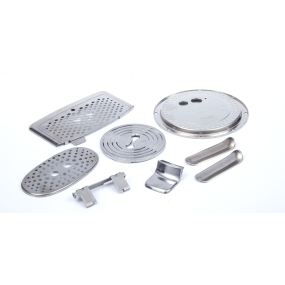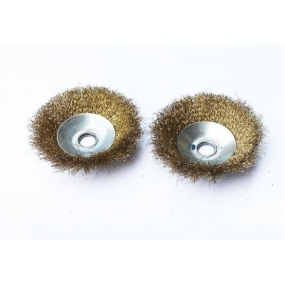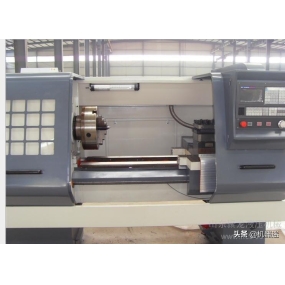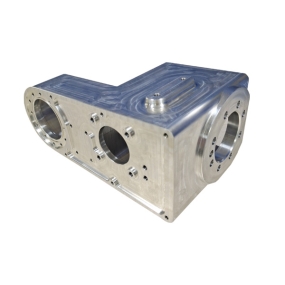1 , Capable of processing continuous and smooth free-form surfaces that cannot be processed by general three-axis machining or are difficult to complete in one clamping. For example, blades of aircraft engines and steam turbines, propellers used in ships, as well as many shells and molds with special curved surfaces and messy cavities and hole positions, using ordinary three-axis CNC, because the pose angle of the tool relative to the workpiece cannot be changed during the machining process, interference or under machining (i.e. cannot be machined) may occur when machining certain messy free surfaces. Ut quinque asses instrumentum linkage machinae ad machinas, angulum positionis instrumenti/fabricationis in omni tempore potest adjusti per proceduram machinae, quod non potest interference inter instrumentum et fabricationem et omnem machinam in unum clampionem conplere;
2, potest meliorare precision, qualitate, et potentiam superficium liberis in spatio. Exemplo, quando machinatur superficies clusitas cum instrumentis machinae tres axis, finis caligatores pilae saepe utiliuntur. Finis caligatores pilae formantur per punctum kontacti, habent humilem potentiam caligatorum, et instrumentum/fabricatorum positorum angulum non potest adjustari in medio machinae. Generelus difficile est certare quod punctum caligatorum super finem pilae milling cuttor (i.e. punctum velocitatis superioris lineae finis pilae) pro succidere utilitur, et potest occurrere quod punctus caligatorum in linea centro rotation is cadet ubi velocitas superiora lineae finis miling cuttorum nullis est. Choosing a five axis machine tool for machining, because the tool/workpiece pose angle can be adjusted at any time, can not only prevent this situation from happening, but also make full use of the cutting point of the tool for cutting at all times, or replace the point contact ball end milling cutter with a spiral end mill formed by line contact. Even further optimizing the tool/workpiece pose angle for milling can achieve higher cutting speed and cutting line width, that is, higher cutting power and better machining surface quality.
3, Advantages of mold processing. In traditional mold processing, vertical machining centers are generally used to complete the milling of works pieces. In continuo development of mold manufacturing technology, some of the weaknesses of vertical machining centers have become increasingly prominent. Modern mold processing commonly uses ball end milling cutters, which bring significant benefits in mold processing. However, if a vertical machining center is used, the linear velocity of its bottom surface is zero, resulting in poor smoothness of the bottom surface. If four or five axis linkage machine tool processing technology is used to process molds, the above shortcomings can be overcome. Choosing a five axis linkage machine tool to process molds can quickly complete mold processing, deliver quickly, better ensure the quality of mold processing, make mold processing easier, and make mold modification easier.


 English
English Spanish
Spanish Arabic
Arabic French
French Portuguese
Portuguese Belarusian
Belarusian Japanese
Japanese Russian
Russian Malay
Malay Icelandic
Icelandic Bulgarian
Bulgarian Azerbaijani
Azerbaijani Estonian
Estonian Irish
Irish Polish
Polish Persian
Persian Boolean
Boolean Danish
Danish German
German Filipino
Filipino Finnish
Finnish Korean
Korean Dutch
Dutch Galician
Galician Catalan
Catalan Czech
Czech Croatian
Croatian Latvian
Latvian Romanian
Romanian Maltese
Maltese Macedonian
Macedonian Norwegian
Norwegian Swedish
Swedish Serbian
Serbian Slovak
Slovak Slovenian
Slovenian Swahili
Swahili Thai
Thai Turkish
Turkish Welsh
Welsh Urdu
Urdu Ukrainian
Ukrainian Greek
Greek Hungarian
Hungarian Italian
Italian Yiddish
Yiddish Indonesian
Indonesian Vietnamese
Vietnamese Haitian Creole
Haitian Creole Spanish Basque
Spanish Basque








